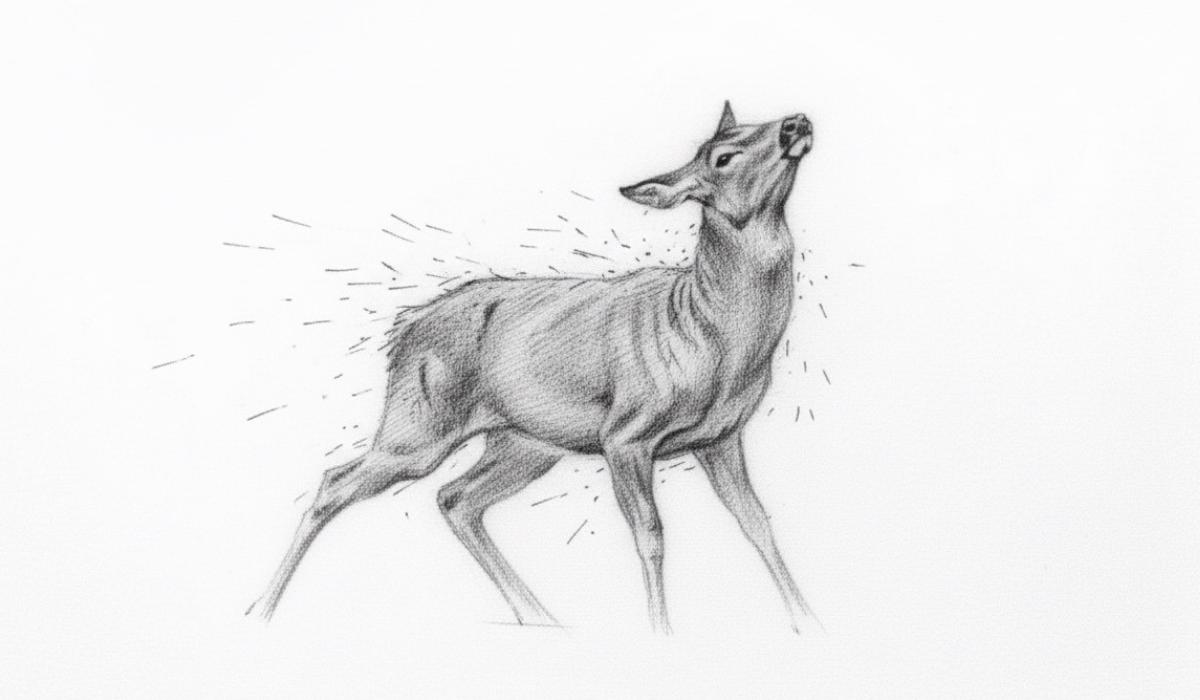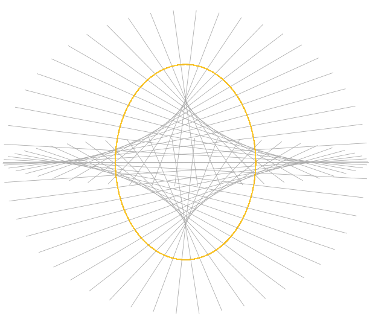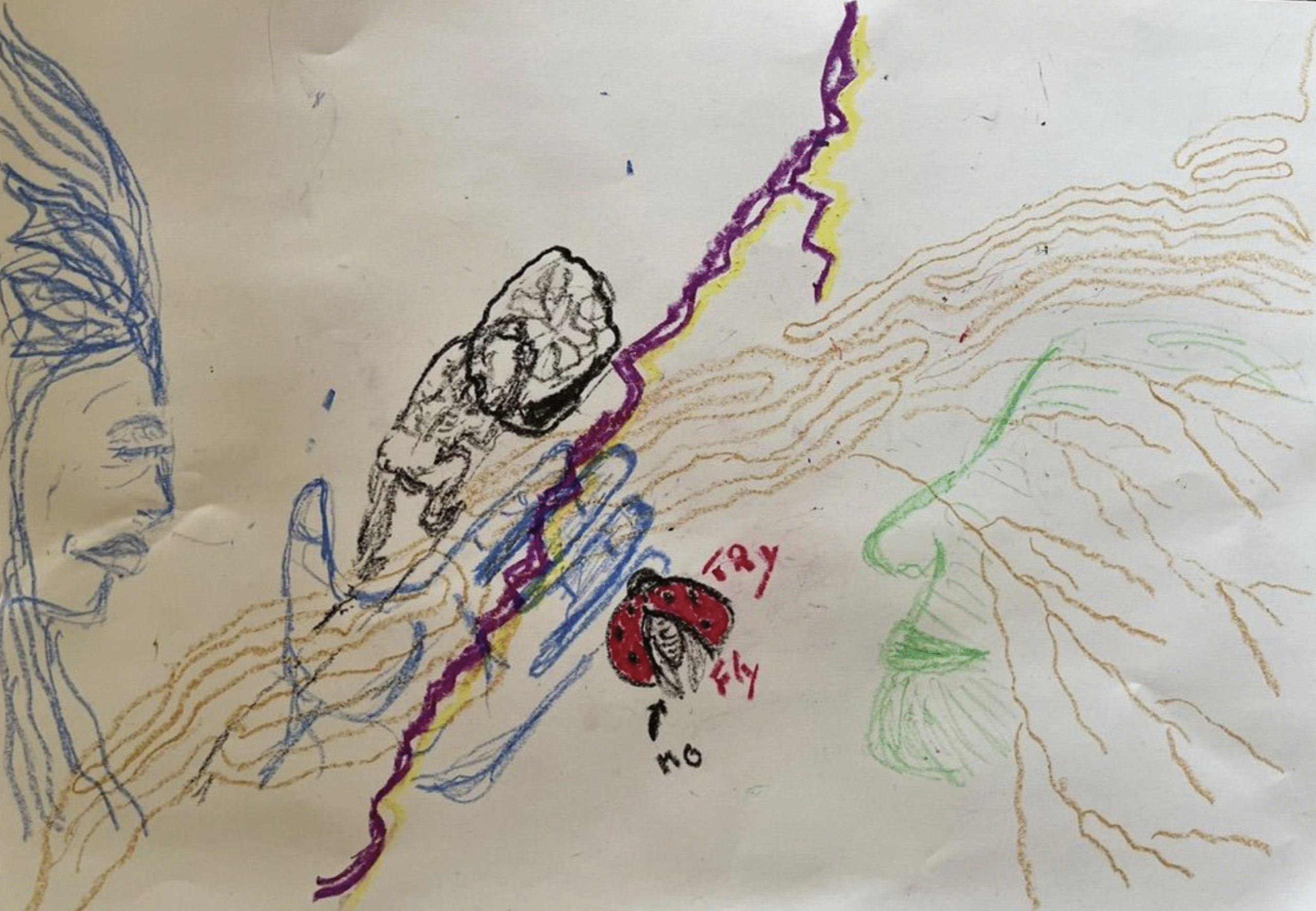Francisca Niklitschek
Contributing Authors
Dmitrij Achelrod PhD
Francisca Niklitschek
Some days, our bodies whisper, other days, they speak louder through tension, restlessness, or that exhaustion that no amount of sleep seems to fix. These are signs from the nervous system, inviting us back into rhythm.
Throughout this series on nervous system regulation, we’ve explored how nature, meditation, and conscious breathing each offer unique doorways into safety and presence. Movement is another doorway – one that brings these elements together through direct, embodied action. When we support self-regulation through movement, we stop resisting the body’s natural processes and begin participating in them.
Movement reconnects the mind and nervous system through rhythm, sensation, and presence. Whether we walk, stretch, dance, or simply sway, every gesture sends signals through the vagus nerve, letting the body know it’s safe to soften, digest, and restore.
In this article, we’ll explore how movement restores the balance between activation and rest, helps release stored stress, and offers simple, embodied practices that can bring more calm, clarity, and vitality into daily life.
How Movement Speaks to the Nervous System
When we move, we’re not just exercising our muscles, we’re influencing the very circuits that govern stress, rest, and emotional balance. One of the key neural highways in this dialogue is the vagus nerve – as we explored in the first part of this series – which connects the heart, lungs, and gut to the brain [1], [2]. Movement, especially slow, rhythmic motion, can activate this pathway, gently shifting us toward parasympathetic regulation (the “rest and digest” mode) [3], [4], [5].
The nervous system thrives on this kind of rhythm. When it learns to transition fluidly between activation and rest, it gains flexibility: the biological foundation of resilience.
Completing the Stress Cycle
Every stress response in the body is designed to have a beginning, a middle, and an end. The trouble is that in modern life, we often experience the first two: activation and strain, without ever reaching the final act: release. The body gets stuck halfway through the story.
When something threatens or overwhelms us, the sympathetic nervous system floods us with adrenaline and cortisol, energy meant to help us run, fight, or move [6], as we discussed in the first article of this series. But in a world where our “predators” are emails and deadlines, we rarely let that energy complete its natural arc. It stays circulating inside us, tightening the jaw, shortening the breath, keeping the system on alert.
Movement re-opens the exit door. It lets the body do what it was wired to do: express, discharge, and return to equilibrium [7]. This is what researchers like Peter Levine call “completing the stress cycle”, finishing the physical sequence that allows the nervous system to recognize that the threat is gone [8], [9].
You might have noticed this instinct in animals: a deer shakes after escaping danger, a bird ruffles its feathers after a near miss. That trembling is wisdom- the body is releasing activation, ensuring the next moment begins fresh. We, too, have that capacity, we’ve just learned to suppress it.

When we move, shaking, walking or dancing with full awareness, we give our nervous system a clear signal: it’s over; you can rest now [4], [10]. This completion restores a sense of safety, coherence, and groundedness. Over time, it also teaches the system that stress can move through, not just get stored within.
This process is about remembering that movement is a doorway home, a way to let life flow through the body, rather than collect inside it.
The Kind of Movements That Help You Regulate
Movement doesn’t have to mean a workout, a yoga class, or something you plan on your calendar. It can be a subtle, spontaneous, and deeply personal conversation between your body and your nervous system. When you start listening, you might realize your body already knows exactly how it wants to move.
The invitation is simple: instead of asking “what should I do?”, try asking “what does my body need right now?” Below are different kinds of movements that help bring the nervous system back into balance, each offering a different doorway into presence, safety, and aliveness.
Slow and Rhythmic Movement: Finding the Ground
When you feel overstimulated or anxious, slow and rhythmic motion helps the nervous system find its ground again [11], [12], [13].
You can try:
- Walking slowly and consciously, noticing the contact of your feet with the ground.
- Gentle stretching or yoga, moving with your breath instead of against it.
- Swaying, side to side or front to back, like a tree in a soft breeze.
- Rocking yourself while seated or lying down, a primal rhythm that humans instinctively use to soothe infants and themselves.
Let your breath move with the motion. You may notice how, within a few minutes, your pulse slows and your perception widens, a sign your parasympathetic system is leading again.
Shaking and Releasing: Letting Energy Move Through
Sometimes regulation doesn’t come from stillness but from movement that’s a little wild, even messy. Stress and tension are physical energies, and the body is wired to complete them through motion [8], [14].
You can try:
- Shaking your arms, legs, and torso for one or two minutes, as animals do after a scare.
- Dancing intuitively to music that fits your current state, not the state you wish you had.
- Running, jumping, or brisk walking when you feel charged or restless.
These movements help the sympathetic nervous system complete its activation cycle, releasing trapped energy instead of storing it as tension [15], [16]. Afterward, take a moment to feel your body again, notice the warmth, the tingling, or the sense of space that often follows release.
Balancing and Integrative Movement: Finding Flow
There are also times when what you need is balance, movement that feels steady, coordinated, and centered. This is the skill that allows you to move with conscious control, ensuring your body’s power is channeled safely and efficiently. Conscious practices that blend presence with greater effort include the controlled, deep core stability of Pilates, holding yoga poses, the slow, continuous transitions found in Tai Chi or slow resistance work, invite a dialogue between effort and ease.
These movements improve the body’s ability to sense its position and orientation, which supports the nervous system in feeling safe and grounded in space [17], [18], [19], [20]. When you move slowly and with awareness, you begin to feel that you can inhabit your own body fully, alert but not tense, strong but not rigid.
Everyday Micro-Movements: Staying Connected to Yourself
Regulation doesn’t need to wait for a special time. Tiny, conscious movements woven into the day can act as gentle resets for the nervous system [21], [22].
You can try:
- Rolling your shoulders during work breaks.
- Turning your head slowly, noticing your neck and jaw.
- Taking one deep exhale and stretch before opening your next email.
- Placing a hand over your heart or belly, and feeling your breath move beneath it.
Between meetings, calls, or commutes, even the smallest gestures can shift your inner state. Roll your shoulders. Stretch your spine. Stand and sway while you wait for water to boil. Each micro-movement whispers to your nervous system: I’m here, I’m listening.
Ultimately, movement is not something to do but something to be in a relationship with. Your body is always in conversation, with gravity, breath, and the world around you. When you let that conversation unfold consciously, you begin to feel more at home in yourself. There’s no single right way. The right movement is the one that brings you closer to a sense of presence, aliveness, and trust.
Conclusion: Let Your Body Lead the Way Back to Regulation
Nervous system regulation is not something we achieve once and for all. It’s a rhythm, a living dance between activation and rest, tension and release, doing and being. And the body is always keeping the beat.
Movement is a simple and reliable way to join that rhythm again. Each gesture, whether a slow stretch, a deep exhale, or a spontaneous shake, is a message to your nervous system: I’m here, I’m listening, I’m safe. These small, conscious acts help restore balance between the sympathetic and parasympathetic branches, allowing energy to move through instead of staying trapped inside.

Over time, this practice deepens into something greater than regulation, it becomes a relationship. You begin to recognize the subtle signals your body sends long before stress turns into overwhelm. You sense when to move, when to rest, and when to simply breathe. This embodied awareness is what researchers describe as autonomic flexibility, the capacity to adapt with fluidity and grace.
This piece on movement completes a circle we’ve been exploring throughout this series: the ways we can support our nervous system through nature, meditation,conscious breathing, and now, movement. Each one is a pathway back to presence, and together they form a map for living in deeper coherence with ourselves and with life.
At Evolute, we believe that growth happens through awareness: through the steady, compassionate practice of coming back to ourselves. Each act of regulation is a small act of inner alignment, a way of cultivating resilience, clarity, and trust in the body’s wisdom.
When you let your body lead, you’re growing into yourself. And that’s the quiet, ongoing miracle of being alive.
Bibliography
[1] S. Breit, A. Kupferberg, G. Rogler, y G. Hasler, «Vagus Nerve as Modulator of the Brain–Gut Axis in Psychiatric and Inflammatory Disorders», Front. Psychiatry, vol. 9, mar. 2018, doi: 10.3389/fpsyt.2018.00044.
[2] L. Ma, H.-B. Wang, y K. Hashimoto, «The vagus nerve: An old but new player in brain-body communication», Brain. Behav. Immun., vol. 124, pp. 28-39, feb. 2025, doi: 10.1016/j.bbi.2024.11.023.
[3] Q. Chen et al., «Autonomic flexibility reflects learning and associated neuroplasticity in old age», Hum. Brain Mapp., vol. 41, n.o 13, pp. 3608-3619, jun. 2020, doi: 10.1002/hbm.25034.
[4] M. Daniela, L. Catalina, O. Ilie, M. Paula, I. Daniel-Andrei, y B. Ioana, «Effects of Exercise Training on the Autonomic Nervous System with a Focus on Anti-Inflammatory and Antioxidants Effects», Antioxidants, vol. 11, n.o 2, p. 350, feb. 2022, doi: 10.3390/antiox11020350.
[5] N. Imagawa et al., «The Impact of Stretching Intensities on Neural and Autonomic Responses: Implications for Relaxation», Sensors, vol. 23, n.o 15, p. 6890, ago. 2023, doi: 10.3390/s23156890.
[6] R. M. Sapolsky, Why Zebras Don’t Get Ulcers: The Acclaimed Guide to Stress, Stress-Related Diseases, and Coping (Third Edition). Henry Holt and Company, 2004.
[7] M. Daniela, L. Catalina, O. Ilie, M. Paula, I. Daniel-Andrei, y B. Ioana, «Effects of Exercise Training on the Autonomic Nervous System with a Focus on Anti-Inflammatory and Antioxidants Effects», Antioxidants, vol. 11, n.o 2, p. 350, feb. 2022, doi: 10.3390/antiox11020350.
[8] Peter A. Levine, In an Unspoken Voice: How the Body Releases Trauma and Restores Goodness. North Atlantic Books, 2010.
[9] P. Payne, P. A. Levine, y M. A. Crane-Godreau, «Corrigendum: Somatic Experiencing: using interoception and proprioception as core elements of trauma therapy», Front. Psychol., vol. 6, abr. 2015, doi: 10.3389/fpsyg.2015.00423.
[10] H. Mitsuishi, «The Effect of Brief, Low-Intensity Stretching Gymnastics on Autonomic Nervous System Activity and Cognitive Function», Health (N. Y.), vol. 14, n.o 12, pp. 1274-1286, dic. 2022, doi: 10.4236/health.2022.1412090.
[11] C. Collet, F. Di Rienzo, N. Hoyek, y A. Guillot, «Autonomic nervous system correlates in movement observation and motor imagery», Front. Hum. Neurosci., vol. 7, jul. 2013, doi: 10.3389/fnhum.2013.00415.
[12] «Interaction of Slow Rhythmic Changes in the Nervous System | Nature». Accedido: 17 de octubre de 2025. https://www.nature.com/articles/1981095a0
[13] E. Marder y D. Bucher, «Central pattern generators and the control of rhythmic movements», Curr. Biol., vol. 11, n.o 23, pp. R986-R996, nov. 2001, doi: 10.1016/S0960-9822(01)00581-4.
[14] D. Berceli, M. Salmon, R. Bonifas, y N. Ndefo, «Effects of Self-induced Unclassified Therapeutic Tremors on Quality of Life Among Non-professional Caregivers: A Pilot Study», Glob. Adv. Health Med., vol. 3, n.o 5, pp. 45-48, sep. 2014, doi: 10.7453/gahmj.2014.032.
[15] E. Barbera, «Regulation Through Rhythm: A literature Review on Dance/Movement Therapy Approaches To Facilitating Nervous System Regulation».
[16] P. Payne, P. A. Levine, y M. A. Crane-Godreau, «Somatic experiencing: using interoception and proprioception as core elements of trauma therapy», Front. Psychol., vol. 6, feb. 2015, doi: 10.3389/fpsyg.2015.00093.
[17] «How Do You Feel? | Princeton University Press». https://press.princeton.edu/books/paperback/9780691204086/how-do-you-feel
[18] J. Rocha, F. A. Cunha, R. Cordeiro, W. Monteiro, L. S. Pescatello, y P. Farinatti, «Acute Effect of a Single Session of Pilates on Blood Pressure and Cardiac Autonomic Control in Middle-Aged Adults With Hypertension», J. Strength Cond. Res., vol. 34, n.o 1, pp. 114-123, ene. 2020, doi: 10.1519/JSC.0000000000003060.
[19] S. Sato, S. Makita, R. Uchida, S. Ishihara, y M. Masuda, «Effect of Tai Chi training on baroreflex sensitivity and heart rate variability in patients with coronary heart disease», Int. Heart. J., vol. 51, n.o 4, pp. 238-241, jul. 2010, doi: 10.1536/ihj.51.238.
[20] S. Telles, S. K. Sharma, R. K. Gupta, A. K. Bhardwaj, y A. Balkrishna, «Heart rate variability in chronic low back pain patients randomized to yoga or standard care», BMC Complement. Altern. Med., vol. 16, n.o 1, p. 279, ago. 2016, doi: 10.1186/s12906-016-1271-1.
[21] J. Ryu y E. Torres, «The Autonomic Nervous System Differentiates between Levels of Motor Intent and End Effector», J. Pers. Med., vol. 10, n.o 3, p. 76, jul. 2020, doi: 10.3390/jpm10030076.
[22] «Assessment of Micro Movements during Acute Psychosocial Stress», MaD Lab. https://www.mad.tf.fau.de/research/projects/empkins-d03/micro-movements/

Patrick Liebl,
Lead Facilitator & Integration Expert
Curious to learn more?
We invite you to schedule a call with us. Together, we can explore any questions you may have. We can explore whether a program with a legal psychedelic experience is right for you at this time.
“We are here to support your exploration, at your pace, with no expectations.” – Patrick Liebl



